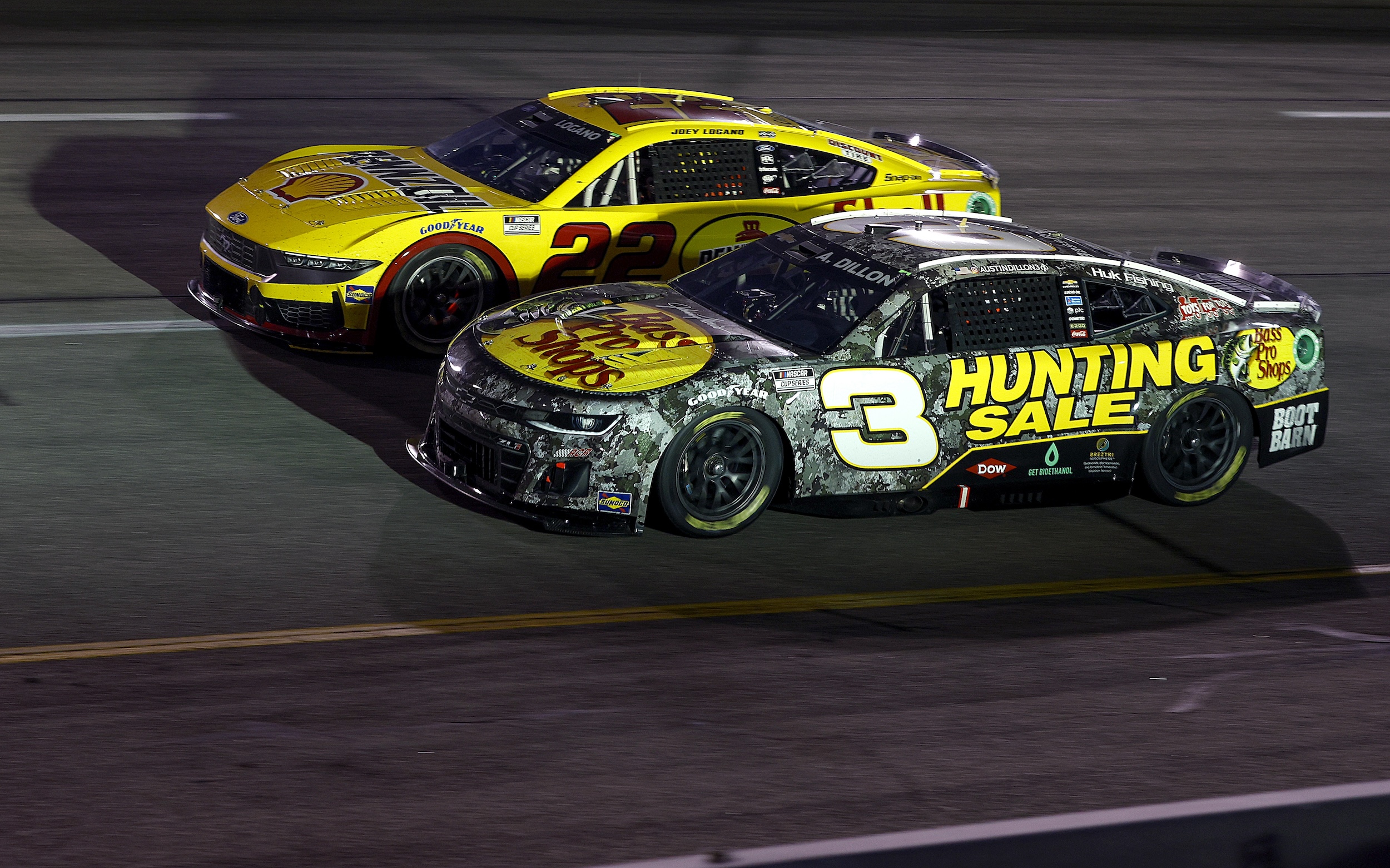Sunday's NASCAR event at the Richmond Raceway in Virginia was supposed to run for 400 laps. Instead, it ran for 408. Ricky Stenhouse Jr. and Ryan Preece crashed during lap 398, forcing the event's only incident-related yellow flag. NASCAR uses a green-white-checker finish system—basically overtime—to ensure that races end with actual racing. In this case, it meant that the cars cruised around the track under caution for a few laps, then had a green flag for a two-lap sprint to the finish. You can see how this is a suitably dramatic way to conclude a 300-mile race.
Austin Dillon of Richard Childress Racing had a comfortable lead at the moment that Stenhouse and Preece collided. Dillon had not won a race in two years, and had earned only two top-10 finishes this year, but he'd led for 34 laps Sunday and was in good shape for a season-defining victory. Unfortunately, on the restart, he was beaten to the front by Joey Logano of Team Penske, and had Denny Hamlin of Joe Gibbs Racing directly on his ass. Dillon's car was strong, but a lap at Richmond Raceway goes by in about 23 seconds; he'd have less than a minute to hold off Hamlin while somehow recovering the lead and securing the victory that prior to the wreck had seemed entirely in the bag.
Anyone who has seen what happens to my poor scrawny nephews when they dare to put themselves ahead of me in the dessert line will recognize the hunger, the desperation, the outright frenzy behind Dillon's closing maneuvers. On the final lap of the race, as the pack entered the final turns, Dillon first drove his car directly into the rear of Logano, spinning him all the way around, and then darted back across the track to smash into the back end of Hamlin, sending him skidding into the wall. Dillon briefly fishtailed after the PIT maneuver on Hamlin but was able to right things and zip across the line for a genuinely insane victory. Those who are not appalled by the recklessness may even find themselves inspired. Let no one stand (or drive) between you and that primo slice of cake!
Part of what is so delightful about this—apart from just the sheer visual spectacle of one driver crashing two other drivers on the final two turns of a race in order to steal a victory—is that everyone knew what was coming. The television announcer, just moments before the climactic series of pinball maneuvers, had predicted, "If Dillon gets to him, there will be contact." Per Jeff Gluck of The Athletic, Dillon's team was imploring him to smash first Logano and then, even more explicitly, Hamlin. Dillon's grandfather, Richard Childress, who owns his racing team, used the radio immediately after the checkered flag to let Dillon know that "Pop Pop is proud" of him, for deliberately wrecking two competitors in order to win a race. Because none of this is strictly against the rules in NASCAR, there was really no other way for this race to end except with Dillon, who was desperate to fight his way into the playoffs, at least attempting to use his car like a huge metal broom to sweep his opponents off the racing line.
But just because it is technically legal in NASCAR to go Smash Mode on your competitors doesn't mean that it is very cool to do so. Logano, in particular, will not be inviting Dillon to any future birthday parties. "It's chickenshit, there's no doubt about it," said a fuming Logano, who ultimately finished 19th, last among the drivers who drove to the checkered flag. "[Dillon] is four car lengths back, not even close. Then he wrecks [Hamlin] to go along with it. Then he’s going to go up there and thank God and praise everything with his baby. It’s a bunch of BS."
"He’s a piece of crap," Logano continued, per The Athletic. "He sucks. He’s sucked his whole career, and now he’s gonna be in the playoffs. Good for him, I guess." Hamlin, who managed to careen across the finish line in second place after being wiped out by Dillon, was somewhat less determined to burn all bridges. As Hamlin sees it, this is an issue of NASCAR permitting this sort of reckless driving, primarily by declining to overturn results or otherwise punish drivers who cross what he describes as "an invisible line."
That may change. Senior vice president of competition Elton Sawyer said after the race that it "hasn't been our DNA to take races away," but that NASCAR will have to review this result, and suggested that it's possible that they may look to set a new precedent. If they stick to normal operating procedures, Dillon will have made a dramatic leap up the standings, and all it took was a few seconds of driving his car directly through anyone in his line of sight.






